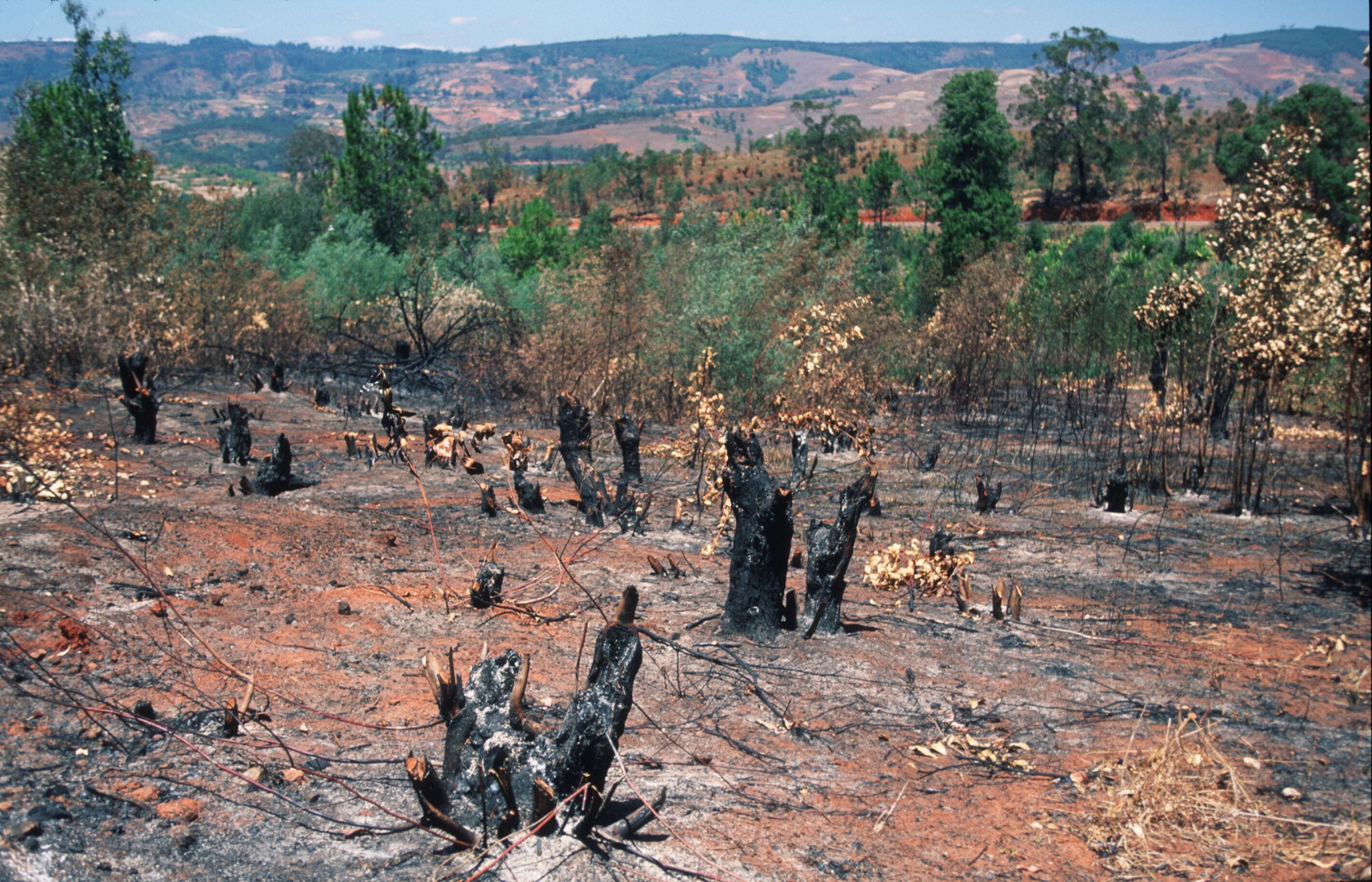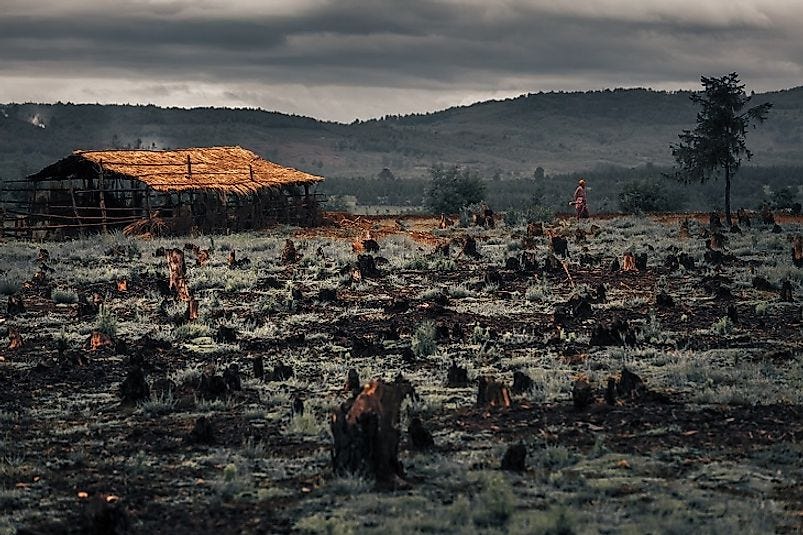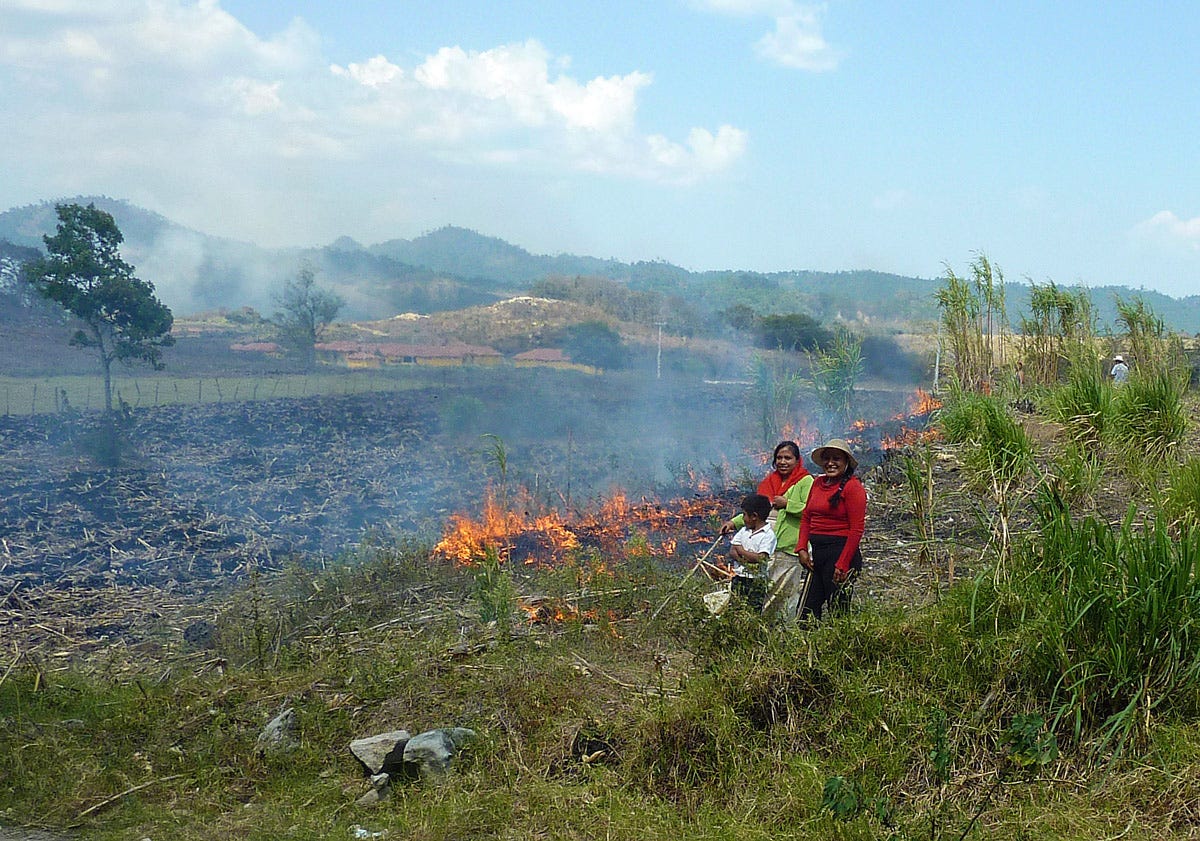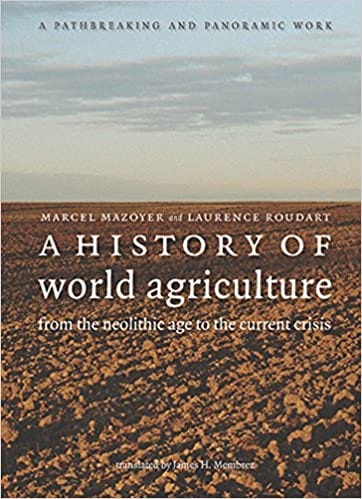How Slash-and-Burn Farming works
And why it was a critical first step in human material progress
In a previous article, I explained how the geography of the Middle East made it very likely to be the first region to develop agriculture. This is just one example of where geography has played an important role in structuring the history of an entire region.
But good geographical preconditions are just the starting place. Humans still need to innovate the technologies, skills, and organizations needed to achieve the first Key to Progress: A highly efficient food production and distribution system. This enables societies to overcome geographical constraints to food production so that large numbers of people can focus on solving problems other than getting enough food to eat.
This article explains how the first farmers invented and perfected the Slash-and-Burn farming system. This system originated in the grasslands of the Fertile Crescent and then gradually spread to every biome that could support agriculture. For most of the last 10,000 years, Slash-and-Burn farming was the dominant form of farming, particularly in the Tropical latitudes
Note: the following description and graphics were adapted from A History of World Agriculture by Marcel Mazoyer and Laurence Roudart. You can find a more detailed summary in my online library of book summaries.
If you are interested in this topic, you should read my “From Poverty to Progress” book series:
See more articles on Food and Agriculture:
Why agriculture is humanity's greatest technological innovation
Why Agrarian societies dominated recorded history for nearly 5000 years
One of the key limiting factors in agriculture is nutrients in the soil. No matter how fertile the soil is, it contains limited nutrients. Each season that farmer plants seeds and harvests crops reduces those nutrients in the soil. Fortunately, natural processing delivers three of the most important nutrients - hydrogen, carbon and oxygen - back into the soil.
Unfortunately, for farmers other nutrients are not naturally replenished. The three most important nutrients for farming are:
nitrogen
phosphorus
potassium
All of these nutrients must be available in abundance for a successful harvest. Eight other micronutrients are needed in much smaller quantities: boron, chlorine, manganese, iron, nickel, copper, zinc, and molybdenum. Modern farmers acquire all those nutrients through synthetic or natural fertilizers. Ancient farmers needed to find other means to do so.
The easiest method is to just abandon the infertile land and search for more fertile land to start a new farm. For this reason, early farmers were constantly on the move. Likely by happenstance, a few farmers discovered that burning trees and shrubs would replenish most (but not all) nutrients in the soil.
Almost as important, wood can be used for heating during the night and winter, a necessity in colder temperatures. Wood is also one of the most useful materials for the construction of tools, dwellings, and transportation devices. Wood can also be used to make charcoal, a crucial first step in metalworking technology.
Through trial-and-error, the first farmers in woodlands and farmers learned how to combine wood, fire, water, soil, and tools into a system of farming that we now call “Slash-and-Burn” farming. Unlike Hunter-Gatherers, slash-and-burn farmers are not nomadic, but neither are they fully sedentary. The ever-depleting soil makes this impossible.
Each slash-and-burn village has a clearly defined range, but each village only farmers a portion of that range each year. The range includes 10-15 uninhabited village sites plus one inhabited site. The knowledge and location of those sites is passed down by orally by village elders.
The village remains at one site for 3-5 years. The rest of the range is left as “fallow” to naturally rejuvenate. The entire village is essentially surrounded by what appears to be “wild” forest, but that forest once was and will in future become the site of villages.
During that time period, each family in the village has one or more nearby plots of land to raise crops for their family. Typically, the women do all or most of the farming. It is the man’s job to:
clear future lands,
hunt for wild animals that have the necessary protein and fatty acid, and
defend the village from attack.
This slash-and-burn system consists of a very long cycle of:
As the current farming lands reduce in fertility, the men walk to a new area within their lands. The women continue cultivating the soil, so the entire village has enough food to survive.
The men identify a new area that has fertile soil and is large enough to support the entire village. The new field is a called a swidden.
The men chop down all the smaller trees and shrubs, while leaving the largest trees intact. The shade from large trees helps to reduce erosion and keeps the sun drying out the soil. The cut vegetation is then left for a period of time so that it thoroughly dries, making it easier to burn. The men return to the village.
Once the cut vegetation has been given enough time to thoroughly dry, the men then hike back to the swidden and burn all the chopped trees and shrubs. The ash from the fire releases the nutrients into the soil. The fire also eliminates weeds and pests.
The men stir the ash into the soil so the nutrients are thoroughly mixed in the first few inches of soil. Natural rainfall drives many of the nutrients deeper into the soil. Then the men return to the village again. All this time, the women have been farming in the village.
When the new land has been thoroughly prepared, and the soil around the old village is thoroughly depleted or overrun with weeds or pests, the entire village moves to new land with fertile soil. The villagers then build new houses and fars the soil for three to five years (depending on the fertility of the soil and the amount of weeds and pests).
When the new lands reduce in fertility too much, the process above restarts in a third plot of land.
At some point, the soil of the first plot has been rejuvenated enough that the family can return back to the lands that the village once farmed 20, 30, 40, or 50 years ago. So the cycle repeats itself.
Agricultural technology
Because of the very low level of technological sophistication, slash-and-burn farmers use what today appear to be very primitive tools. Those tools are typically made from wood, stone, or metal. The tools are effective at what they do.
Slash-and-burn farming in the past
Slash-and-burn farming was the dominant farming system until the invention of animal traction plows around 3000 BCE. Because the technique was not dependent upon domesticated animals and was effective for both grains and root vegetables, slash-and-burn farming spanned massive regions. Essentially any region in the world with the following biomes has at least some history with this farming method:
Other than the Hunter-gatherer system, the Slash-and-burn farming system was probably the most flexible sustenance system in world history.
So why did Slash-and-burn farming decline?
When animal-traction plows were invented, Agrarian societies were able to grow far larger in population, develop far more complex technology, and build massive armies. Given that new generations of farmers are always on the look-out for new fertile regions to farm, it was inevitable that Agrarian societies and their militaries would expand to every region capable of supporting their agricultural system.
In the Old World, this meant that Agrarian societies conquered or migrated to virtually every region with a Temperate Forest or Mediterranean biome. They also dominated and river capable of supporting plow-based agriculture. The sheer scale of Agrarian demographic and military power meant that traditional slash-and-burn societies were forced to:
Copy the practices of Agrarian societies
Retreat to regions that Agrarian societies were not interested in conquering or farming, or
Die
In the New World, the lack of domesticated animals capable of pulling plows meant that a similar transition did not occur until the European migration. European migrants with sophisticated agricultural techniques, domesticated crops and domesticated animals supplied the missing preconditions for complex societies. So, while the slash-and-burn farmers persisted longer in the old world, many of them were pushed out of their native regions at a later date.
This dramatic transformation of the region in such a short time is what James Belich calls “explosive colonization.” Explosive colonization occurs when:
a large group of settlers from complex societies moves into a sparsely populated region, and
the region shifts from one society type to another in a very short period.
This enables a dramatic expansion of population, wealth, and productive land.
Slash-and-burn farming today
Slash-and-burn farming is still common in areas where there is plenty of natural wood and the crops are not suitable for animal-traction plowing. Some of the most important areas are:
Central America
South American tropical forest area, like the Amazon river basin
African tropical forest areas, particularly West Africa
The uplands of Southeast Asia
See more articles on Food and Agriculture:
Why agriculture is humanity's greatest technological innovation
Why Agrarian societies dominated recorded history for nearly 5000 years
If you are interested in this topic, you should read my “From Poverty to Progress” book series:
If you are interested in the intricacies of this and other farming systems, you can find a more detailed summary of A History of World Agriculture by Marcel Mazoyer and Laurence Roudart in my online library of book summaries.















Informative essay but with several glaring typos, it requires some editing.